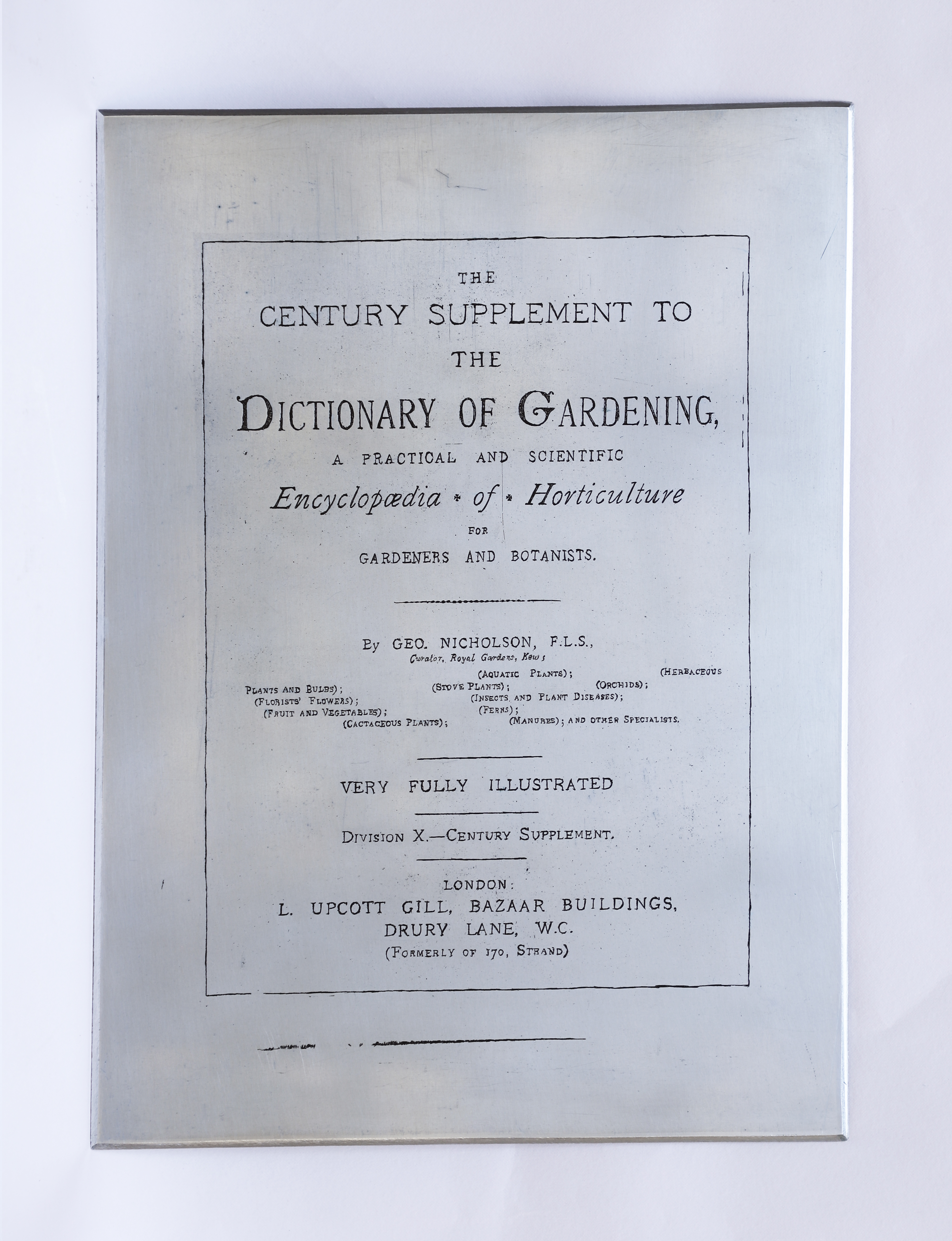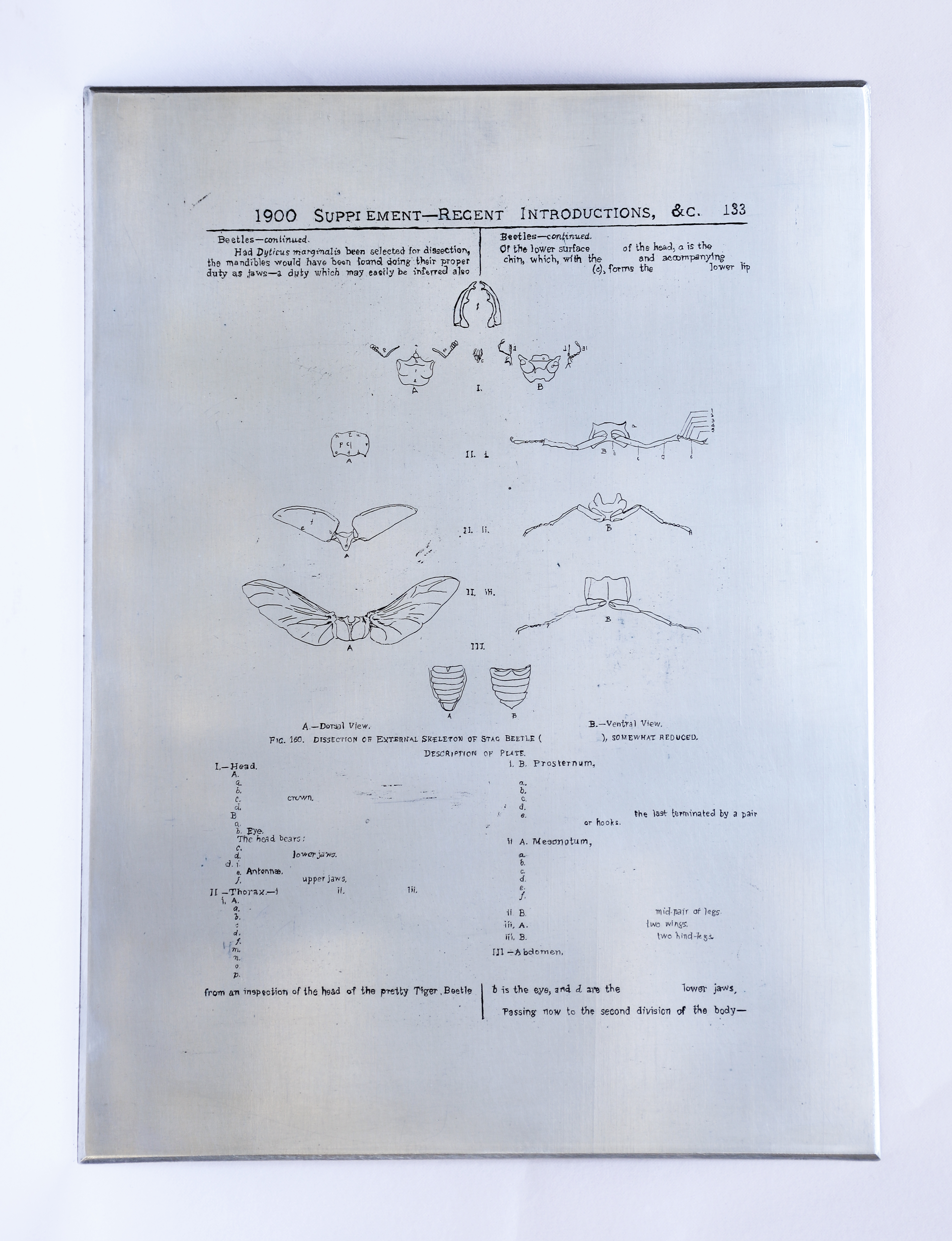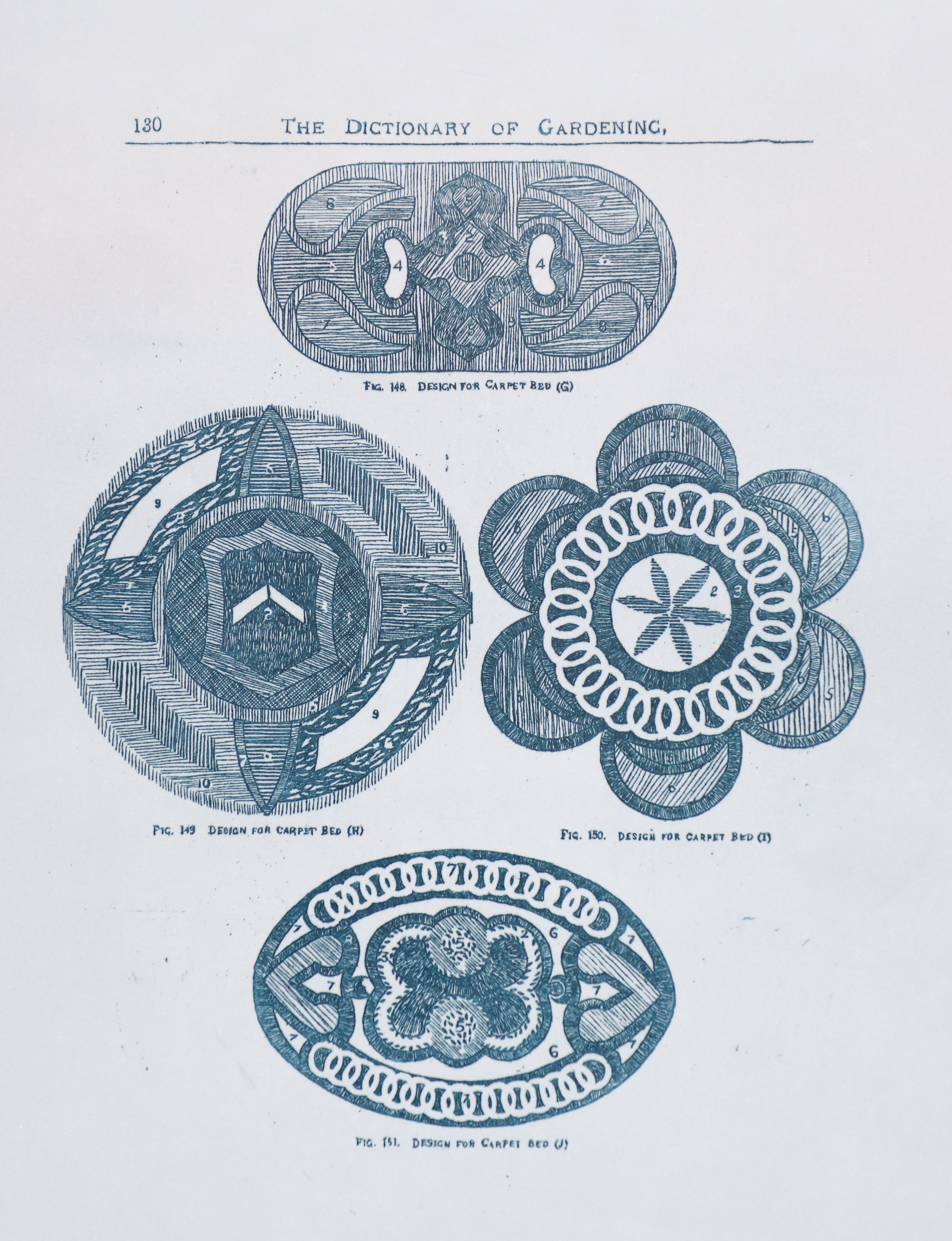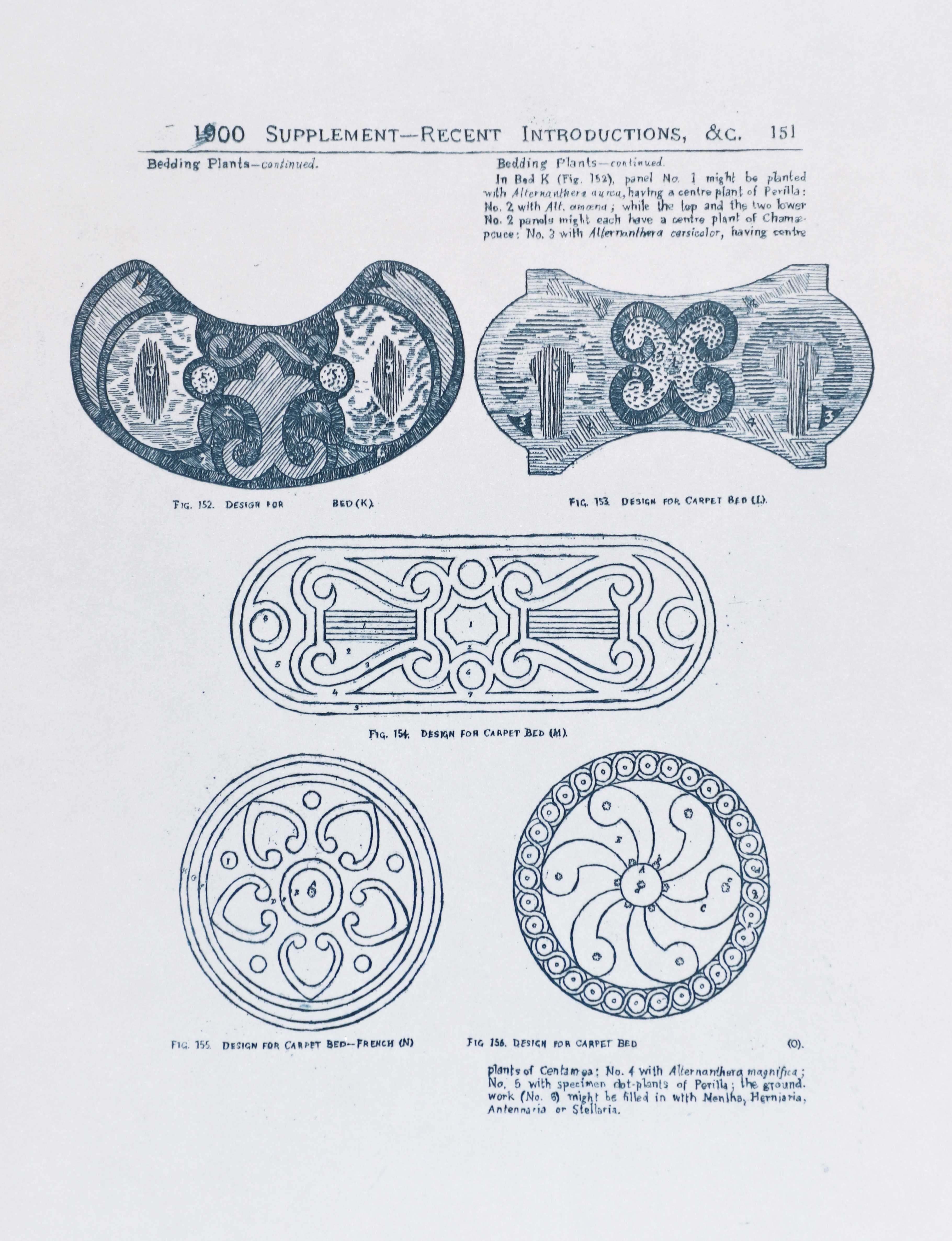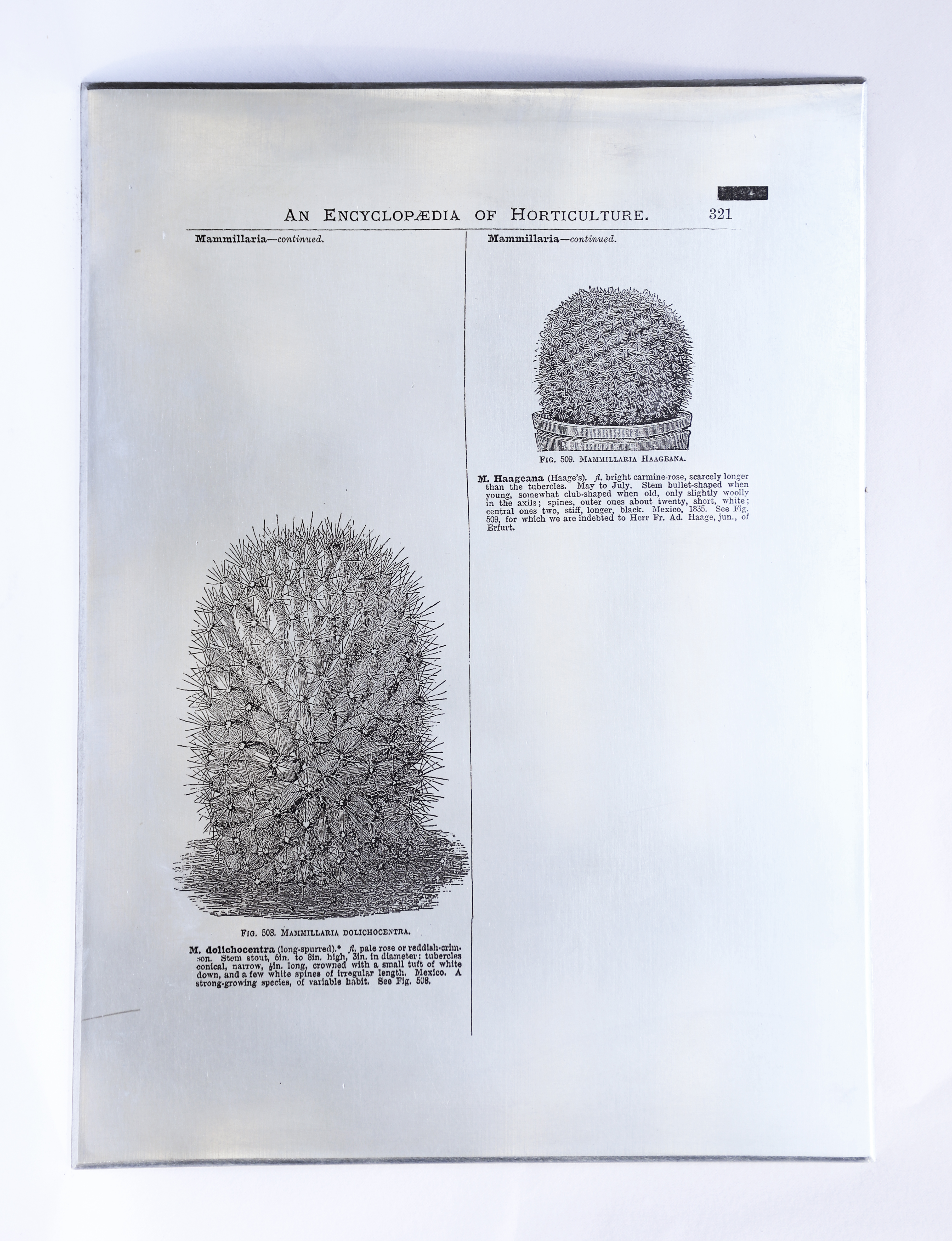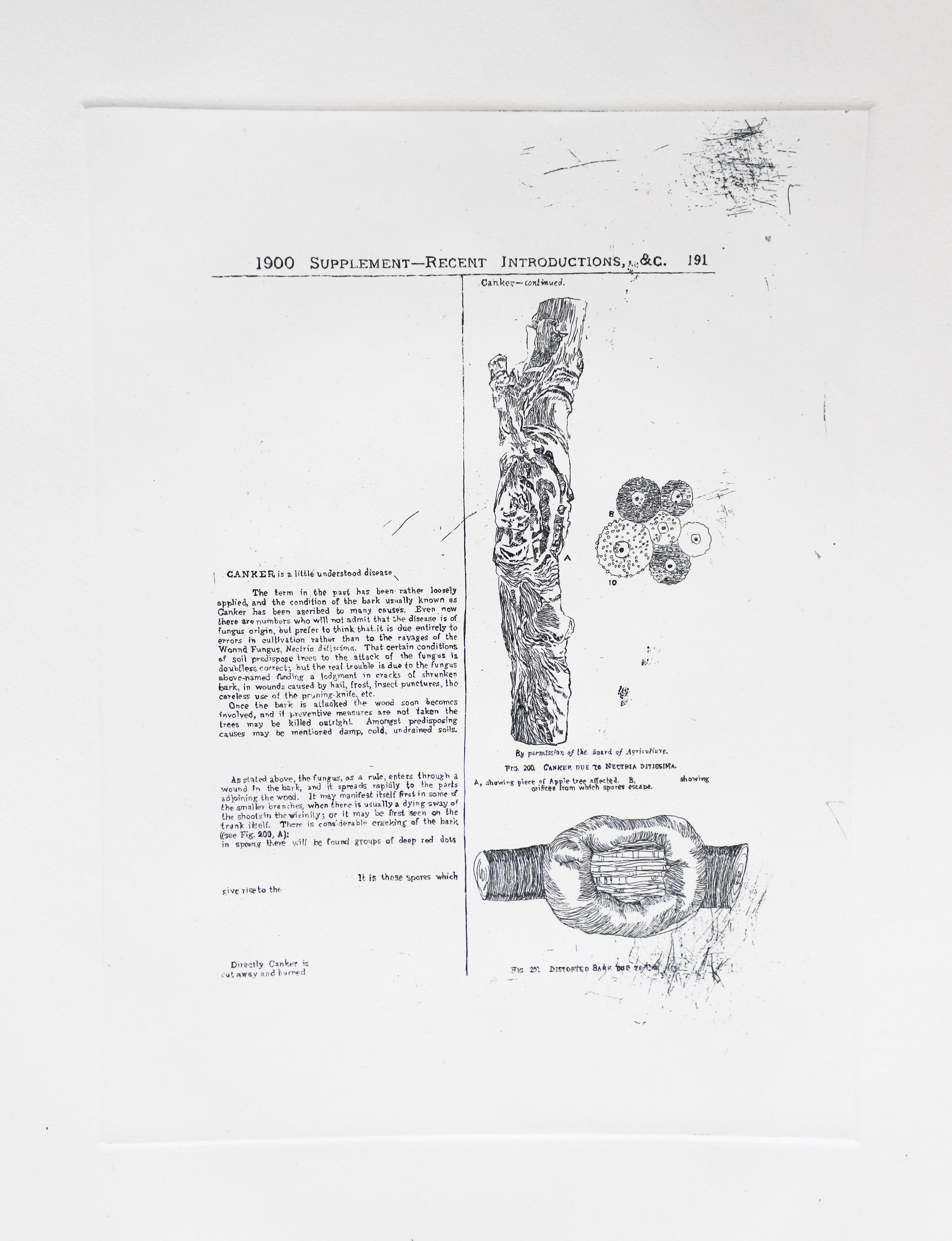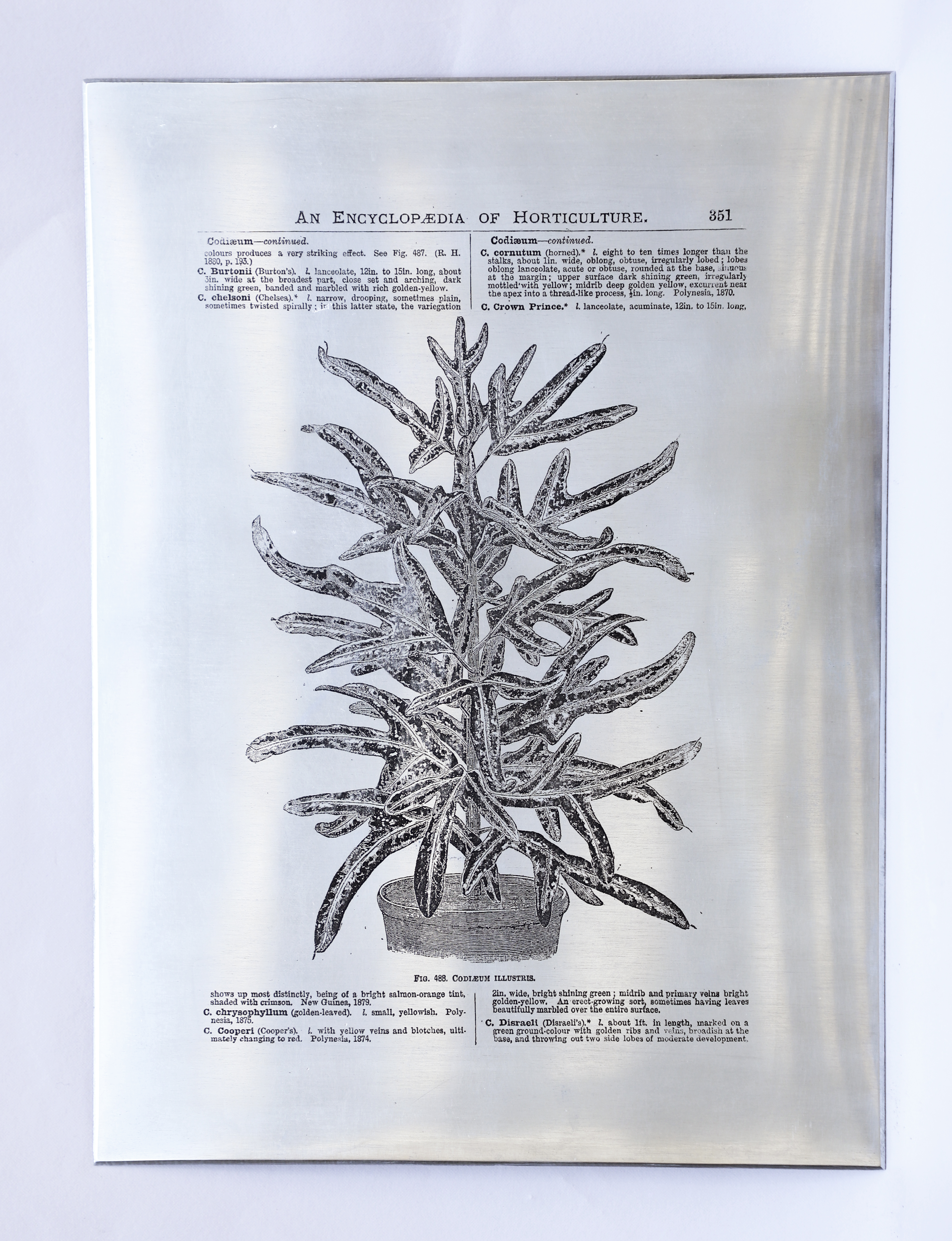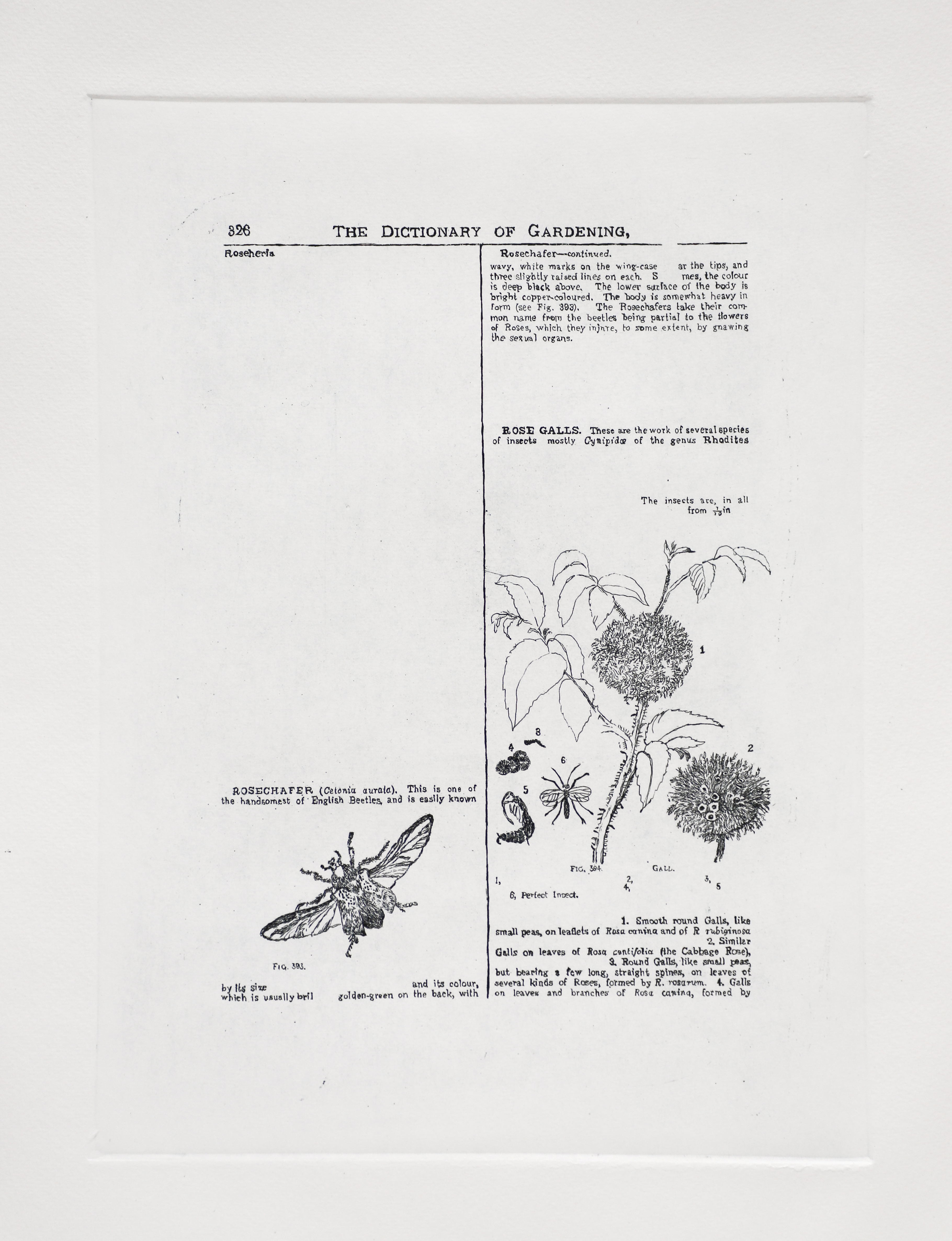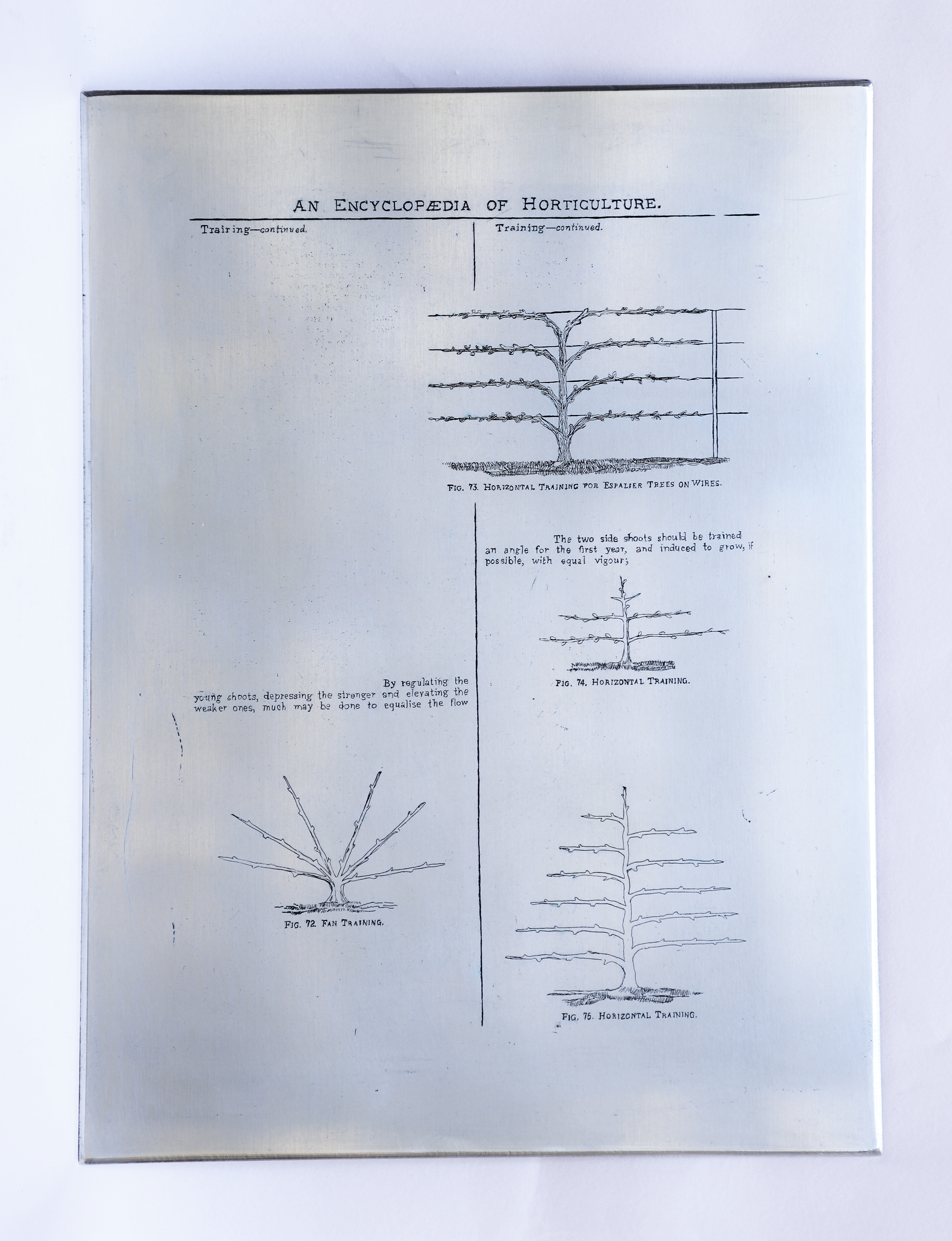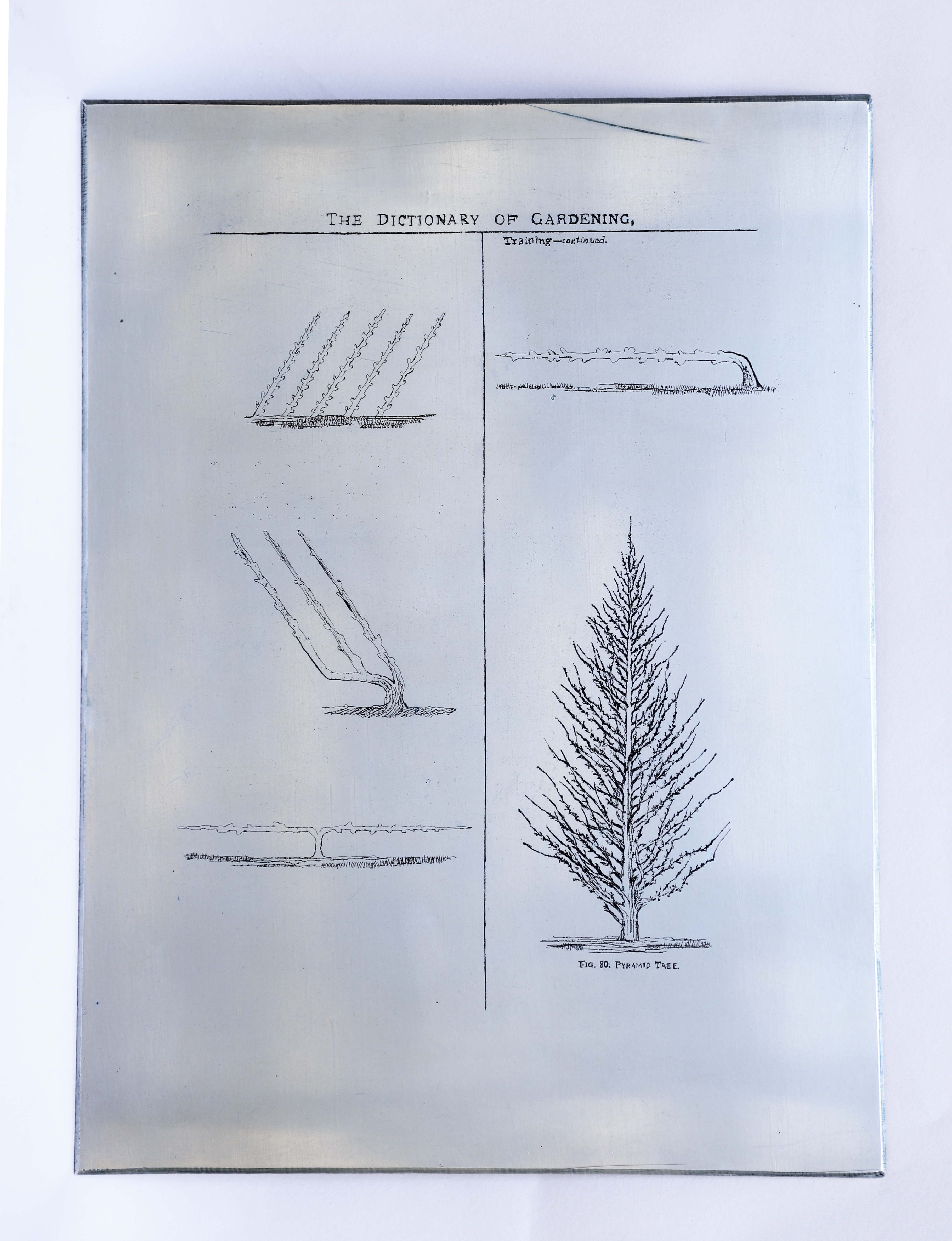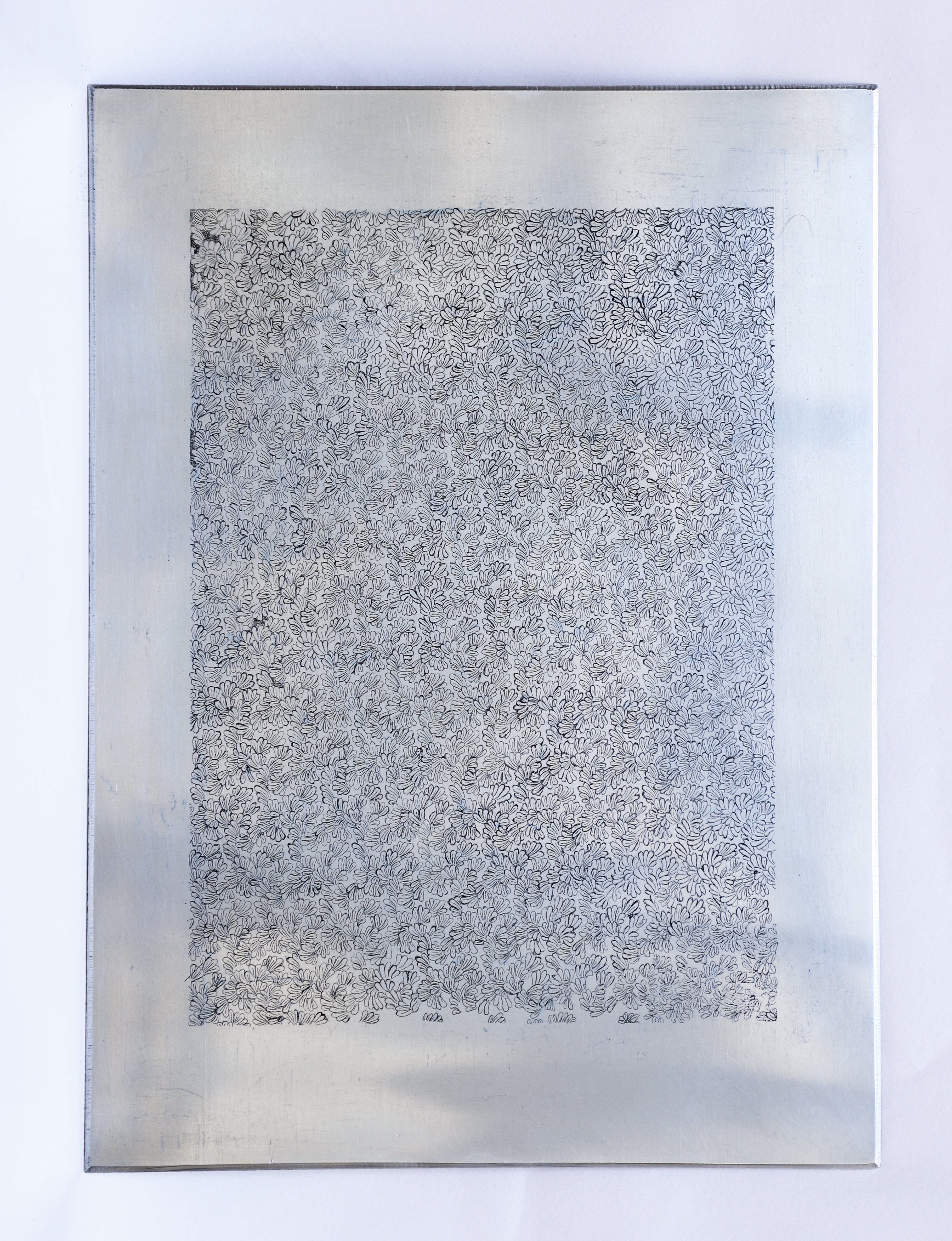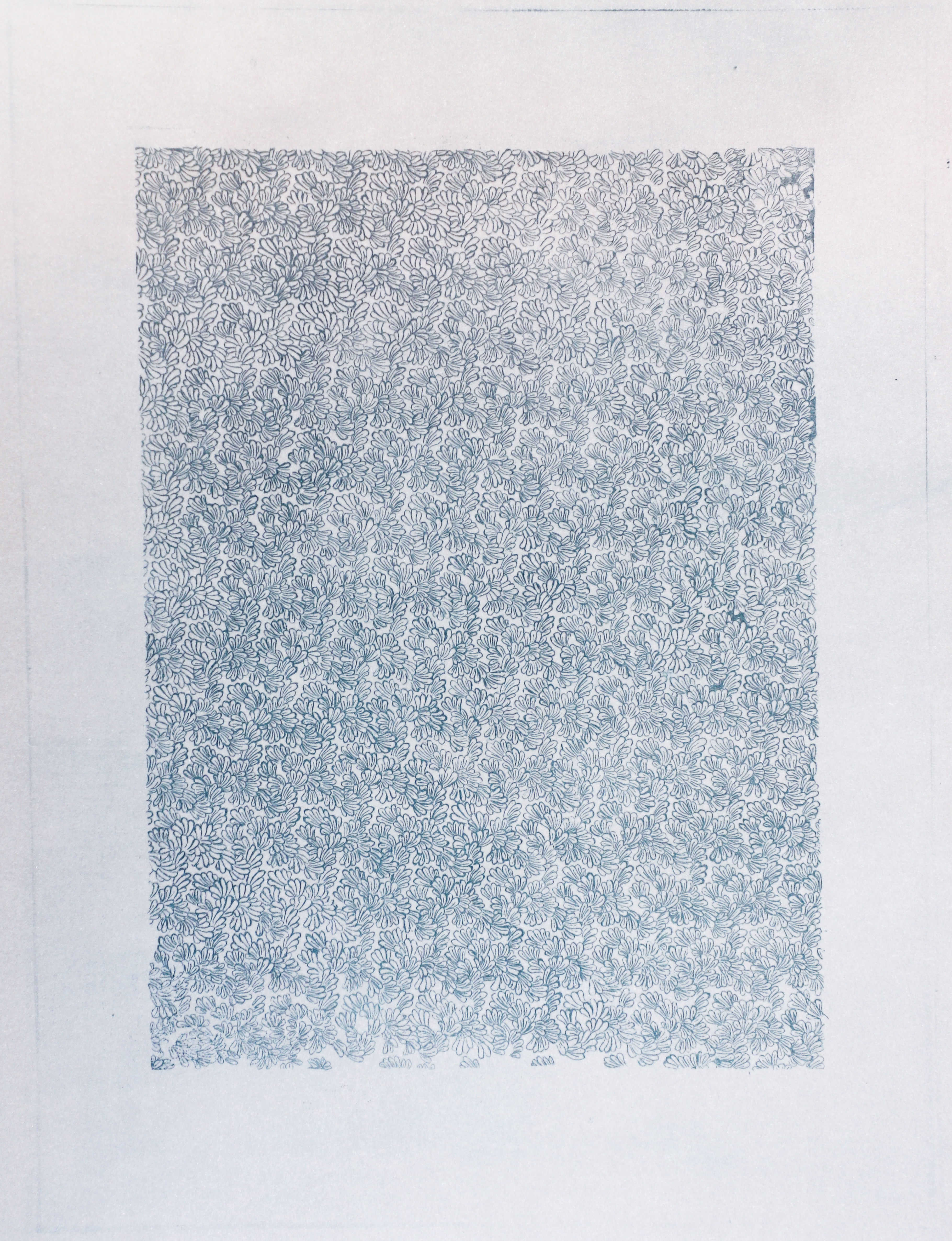The Dictionary of Gardening
Etching prints on Canson Montval and Gateway, etched plates, and heat transfers
14in x 17in (22)
Printed at Prati The Atelier, Bangalore, India.
2019-Ongoing
In a series of volumes, titled The Dictionary of Gardening (The Encyclopaedia of Horticulture, published in London in 1887), the author, George Nicholson, begins to teach the reader everything he or she needs to know about how to tend to plants. Justifying himself at each step, the author explains that plants do not know how to grow within their limits—for instance how to root correctly, grow straight and aesthetically, understand their optimum size and shape, and so on. Parallelly, the Dictionary moves into sections which address the fact that we must constantly save the plant, not only from its own lack of understanding, but also from everything that would come and attempt to destroy it.
What's interesting is that this dialogue that the author is 'teaching' you to have (or improve on) is based solely on ideas around aesthetics and intimacy—translating to care that keeps them alive and hurt if they die—instead of larger economic structures that exist around agriculture, for example. When read, it seems like the author does not write keeping the intimacy in mind. In fact, often, his description of care of an ivory handle on a budding knife seems more intimate than his description of the plant. That removal of intimacy brings to the fore a larger question—why is such a dialogue is struck at all and what does such a mutually tamed relationship bring?
Pages from this series of books are extracted, and reproduced onto etching plates as drawings and transfers. In reproducing specific pages of the book—one that was originally produced using metal plate engravings and a letterpress—the information is brought back, tracing parallel processes and materials, and allowing what is being said to be recontextualized.
